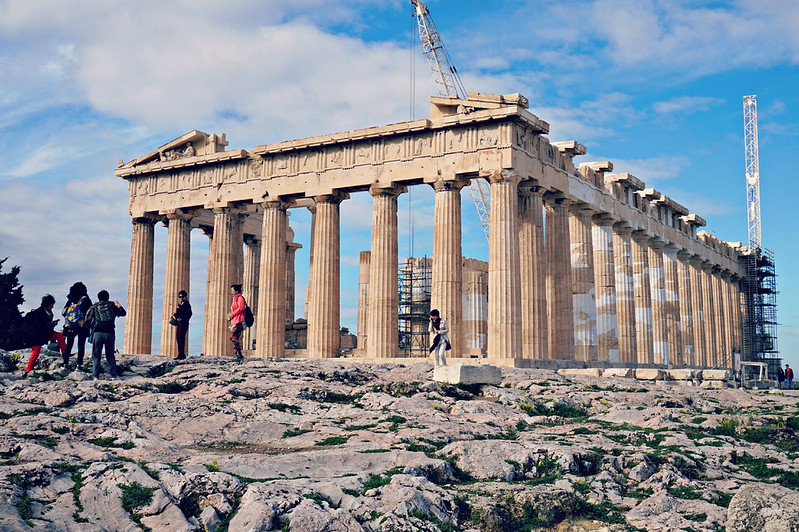
É a principal atracção turística de Atenas e por isso é uma missão quase impossível tirar fotos sem que não esteja uma multidão de pessoas pelo caminho. Depois de ter visto Ephesus na Turquia a Acrópole já não tinha para nós o mesmo encanto, se tivesse sido ao contrário teríamos dado mais valor á experiência de a visitar. Ainda assim é um lugar único, fascinante, complexo, carregado de histórias, de mitos e em constante reabilitação.
It's the main tourist attraction in Athens and so it is an almost impossible task taking pictures without a crowd of people along the way. After seeing Ephesus in Turkey the Acropolis no longer had the same charm for us, if it had been otherwise we would have given more value to this visit experience. Still it's a unique place, fascinating, complex, full of stories, myths and constant rehabilitation.
Fotos: Março 2015
Fotos: Março 2015

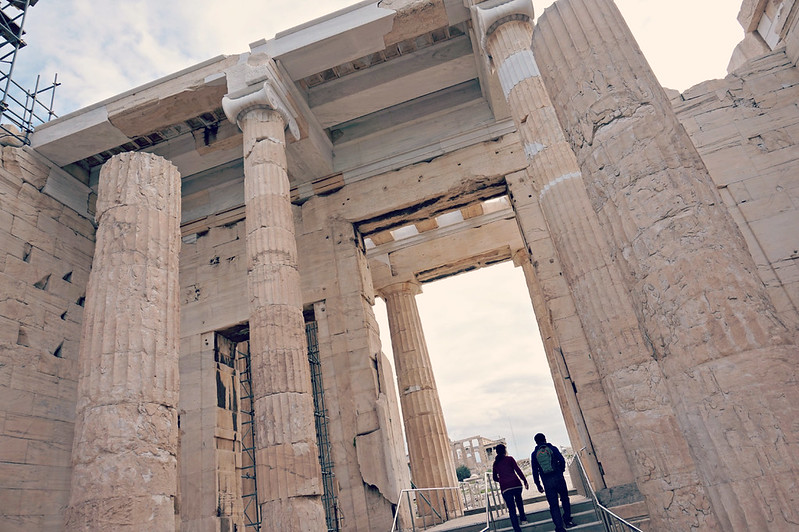
De qualquer forma é inegável a sua riqueza histórica e arqueológica, começando pela Propylaia, a porta para entrar na Acrópole.
Do lado direito temos o Odeon de Herodes Atticus, que é um teatro construído já na época romana. O homem que lhe dá o nome, era um aristocrata grego que o construiu em honra da sua mulher, Aspasia Regilla.
É utilizado ainda nos dias de hoje para concertos, peças de teatro, entre outras actividades culturais. Foi renovado nos anos 50 para esse efeito.
Anyway there is an undeniable historical and archaeological wealth, starting with Propylaia, the door to enter the Acropolis.
On the right we have the Odeon of Herodes Atticus, a theater that is already built in Roman times. The man who gave it its name, was a Greek aristocrat who built it in honor of his wife, Aspasia Regilla.
It is still used today for concerts, plays, and other cultural activities. It was renovated in the 50s for this purpose.
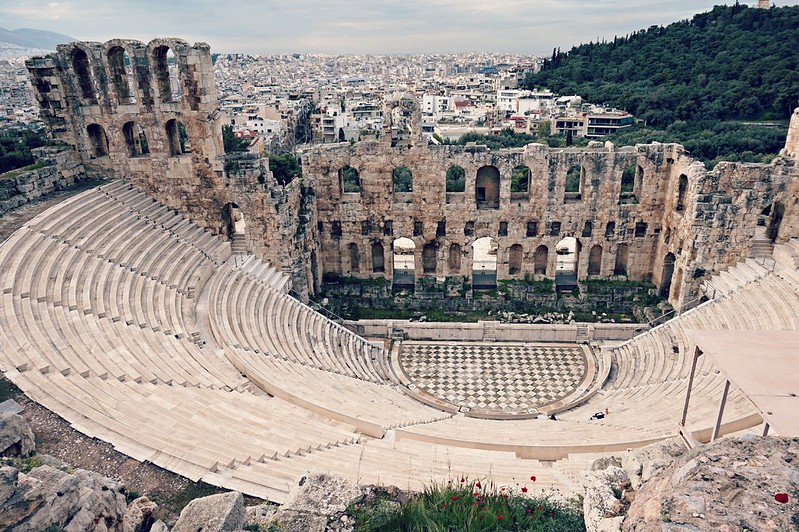
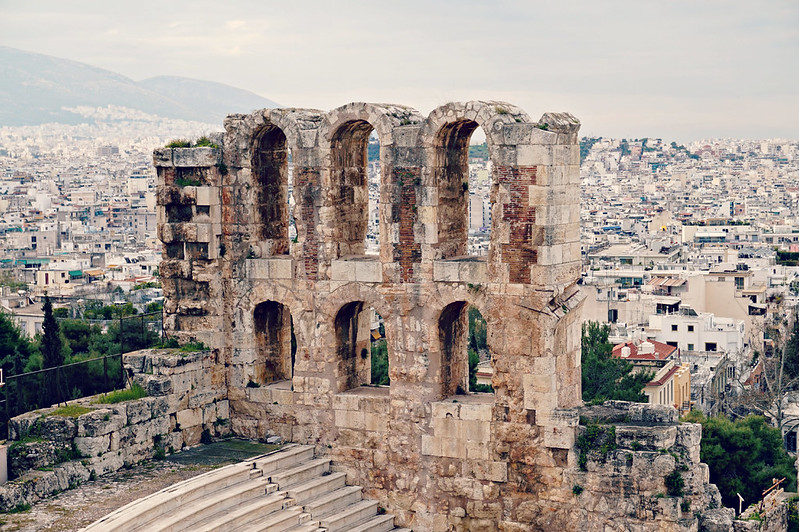
Subindo um pouco e ainda do lado direito temos o Parthenon. O edificio mais imponente da Acrópole, dedicado a Athena, a deusa grega que os habitantes da cidade consideravam sua protectora. Conhecida nessa mitologia como a deusa da guerra e da civilização, era uma das doze do Monte de Olimpo.
Going up slightly to the right there's the Parthenon. The most imposing building of the Acropolis, dedicated to Athena, the Greek goddess that the townspeople considered their protector. This mythology known as the goddess of war and civilization, was one of twelve of Mount Olympus.
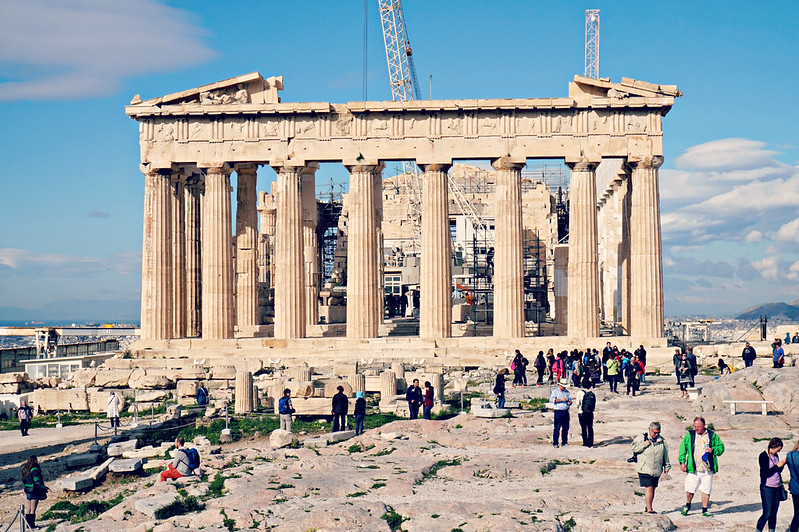
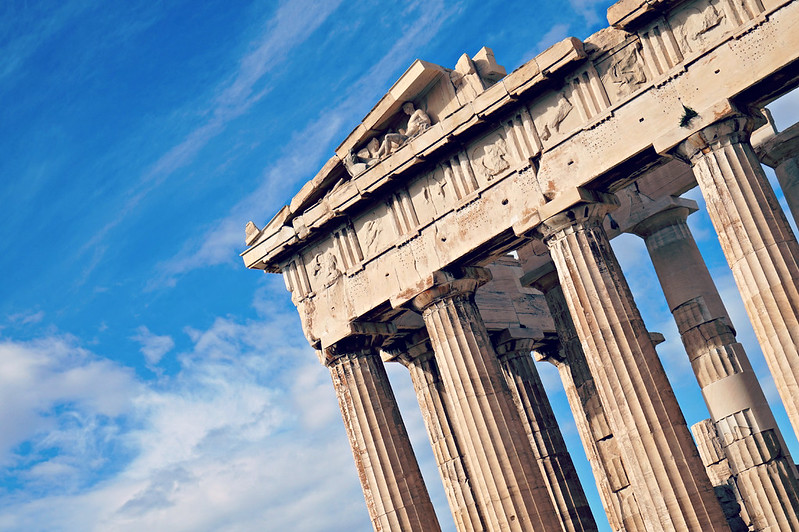
Segundo o que diziam as placas, as obras de restauro do Parthenon terminaram em 2004.
Mais abaixo está o Teatro de Dionysus, utilizado na Grécia antiga em celebrações em honra do Deus que lhe dá o nome. Sob a gestão de Roma, o teatro foi remodelado e já muito pouco resta do monumento dessa era.
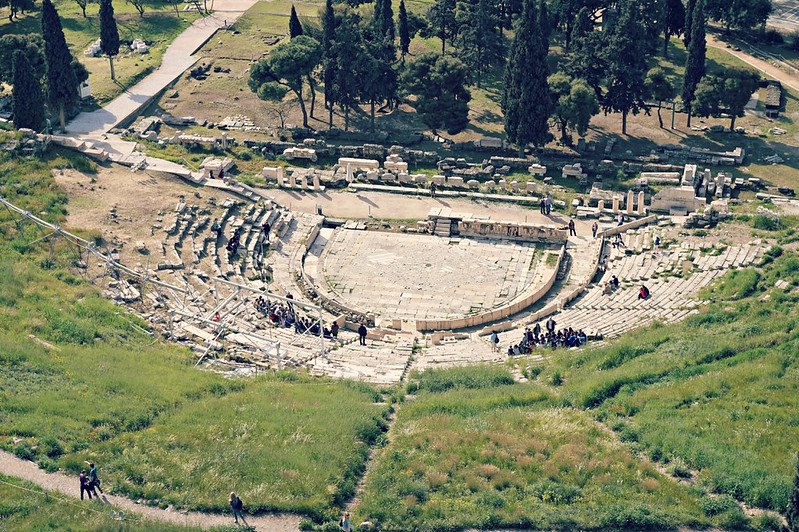
Segue-se o Santuário de Zeus Polieus e o Erechtheion onde podemos encontrar a famosa varanda com as esculturas Caryatids (Cariátides) como pilares. As figuras que actualmente estão na varanda são na realidade réplicas das que existiram. Das seis, cinco estão no Museu da Acrópole e uma está num museu em Inglaterra.
Following is the Sanctuary of Zeus Polieus Erechtheion and where we can find the famous balcony sculptures Caryatids as pillars. The figures that are currently on the porch are actually replicas of those that existed here. Of the six, five are in the Acropolis Museum and one is in a museum in England.
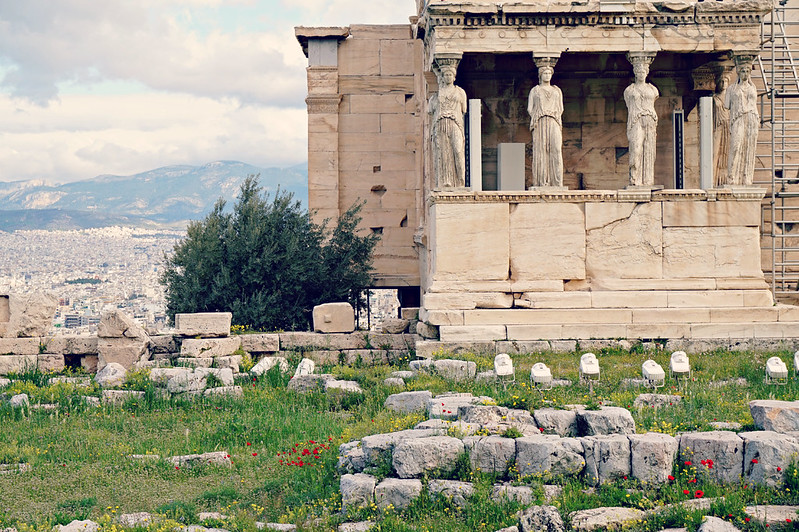
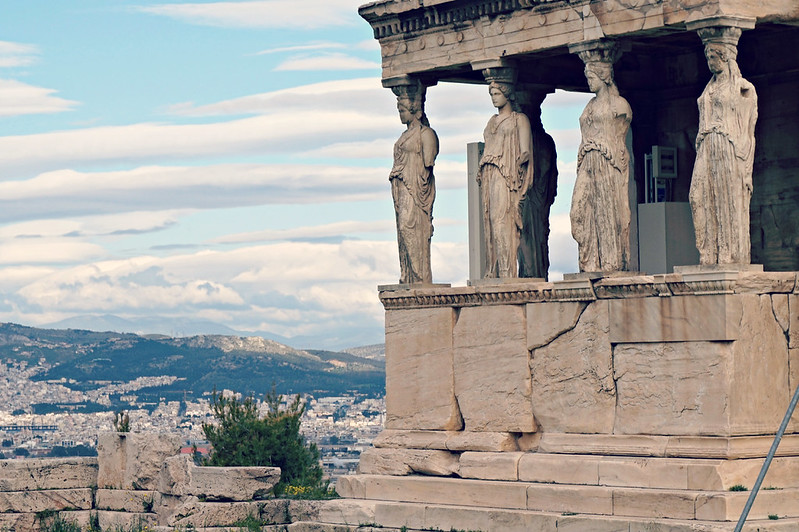
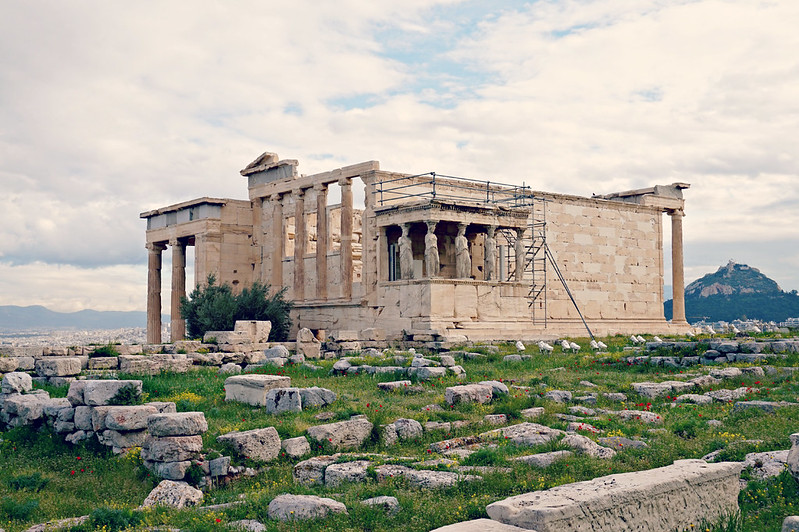

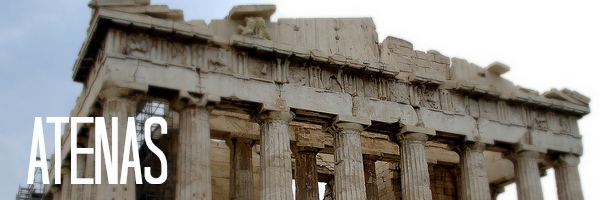
Sem comentários:
Enviar um comentário